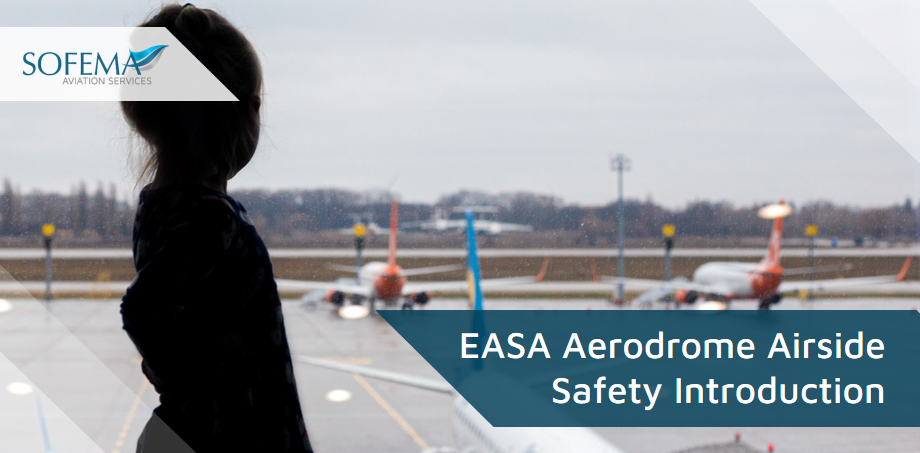Sofema Online (SOL) www.sofemaonline.com considers the key aspects of the Aerodrome Airside Safety
Introduction
The EASA Aerodrome Airside Safety compliant program should cover the essential principles and practices needed to maintain safety in the airside areas of airports, which include runways, taxiways, and aprons where aircraft operate.
Consider the following:
EASA is responsible for the high-level regulations which drive safety standards across European aerodromes. Key points include the identification of common hazards such as Foreign Object Debris (FOD), wildlife strikes, and vehicle movements, as well as the importance of risk management to prevent accidents and incidents. Multiple stakeholders, such as airport operators, airlines, and ground handling agencies, are all responsible and play a part in maintaining a safe environment.
Safety culture is an essential element including the need for effective communication, training, and reporting practices among all personnel working on the airside. The need to address both the development and delivery of consistent practices to cover operational procedures, including best practices for handling aircraft, vehicles, and emergencies.
Ensuring the delivery of mandatory training and continuous improvement through safety drills and audits.
Ensuring the optimisation of technology within infrastructure in promoting safety. Consideration of human performance and human factors within ramp operations.
Promoting the integration of environmental sustainability with safety practices, ensuring that safety remains a priority while addressing environmental concerns.
Key Challenges and Issues in Airside Safety
- One of the primary challenges in airside safety is ensuring that all personnel, from new hires to seasoned professionals, possess the necessary skills and knowledge to perform their duties safely and effectively.
- The dynamic nature of the airport environment, combined with the diverse roles and responsibilities of airside staff, makes it essential to deliver consistent, high-quality training.
- Inadequate or inconsistent training can lead to misunderstandings of safety protocols, increasing the risk of incidents.
- Human error remains a significant contributor to airside incidents. Factors such as fatigue, stress, and lapses in communication can undermine safety, even when robust systems are in place.
- Addressing these human factors through targeted training, awareness programs, and fostering a culture of safety is crucial for minimizing risks.
- Effective management oversight is critical to ensuring that safety procedures are not only established but consistently followed.
- Maintaining rigorous oversight in a busy, fast-paced environment poses significant challenges. Ensuring accountability at all levels, from operational staff to senior management, is essential to preventing safety oversights and maintaining compliance with regulatory standards.
- With the implementation of EASA Commission Regulation (EU) No 139/2014, aerodrome operators are required to operate within a performance-based regulatory framework.
- This approach places greater emphasis on proactive risk management and continuous improvement, requiring robust oversight mechanisms to ensure compliance.
- Aligning day-to-day operations with these regulatory demands can be complex, particularly in a rapidly changing operational environment.
- Identifying, assessing, and mitigating risks in the airside environment is a continuous process that requires strong management oversight.
- Without a proactive approach to risk management, including regular audits and inspections, minor issues can escalate into major incidents.
- Ensuring that all personnel are trained to recognize and respond to potential hazards is essential for maintaining a safe operational environment.
- The airport environment involves a wide range of stakeholders, including ground handling teams, air traffic controllers, maintenance crews, and emergency responders.
- Ensuring that all these parties work together seamlessly requires not only clear communication but also a shared commitment to safety.
- Misalignment between stakeholders can lead to gaps in safety protocols, which management must actively work to bridge.
Next Steps
Follow this link to our Library to find & download related documents for Free.
Sofema Aviation Services Provides Regulatory Training covering Airside Safety. For questions and comments, please email team@sassofia.com.
Tags:
SAS blogs, infrastructure, safety drills, Airside Safety, European Aerodromes, stakeholders, Aerodrome Safety, Ramp Operations, Foreign Object Debris (FOD), Aircraft, Human Performance, Regulations, Airport Operators, Risk Management, Human Factors, Ground Handling, EASA





